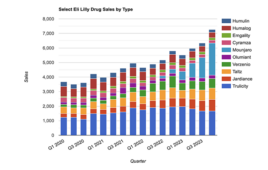Sage-N Research Inc., a leader in computational proteomics, announces the integration of the first commercially available phosphorylation tool using mass spectrometry into its drug discovery platform. The new phosphorylation algorithm, based on a method developed by Professor Steve Gygi of Harvard Medical School, measures the likelihood of correct phosphorylation site localization which is important for the study of many diseases like cancer.
The analysis of post-translational modifications (PTMs) is particularly important for the study of many diseases. If alterations occur in the regulation of these protein modifications it can lead to diseases such as Alzheimers and cancer. PTMs like phosphorylation are used as chemical switches in protein interactions, and as such their identification is essential as it leads to insights into the function and role of the protein in the biological system. It is also useful in the development of new drugs for these hard-to-treat diseases, and with a third of all newly marketed drugs being phospho-proteins (kinase inhibitors), the need for a tool to identify if a protein has phosphorylated has never been more essential.
Sage-N has worked in close collaboration with Steve Gygi, the developer of the first phosphorylation algorithm ASCORE, to integrate the technology into its drug discovery platform. The platform features industry-leading post-processing tools with the new Sorcerer Enterprise 4.0 software to provide the most sensitive and accurate identification and characterization of low abundance phospho-proteins and PTMs important to cancer and stem cell research.
The phosphorylation algorithm goes beyond the identification of proper peptide sequencing to provide information about the presence or absence of site-determining ions. Sage-N Research has integrated the tool with the SEQUEST 3G search engine that was developed in partnership with Professor John R. Yates III of the Scripps Research Institute. The phosphorylation algorithm generates a probability based score from the outcome of the SEQUEST 3G data which measures the probability of correct phosphorylation site localization based on the presence and intensity of site-determining ions in MS/MS spectra.
It is now possible to identify and characterize proteins on a large scale, with multiple scores using mass spectrometry proteomics. Standard search engines are only able to identify the sequence of a protein but fail to determine if the phosphorylation site is correct. By integrating the new phosphorylation tool with SEQUEST 3G, it processes the data and provides multiple sites and a probability score to maximise data sensitivity by efficiently distracting incorrect peptide spectral matches (PSMs).
Steve Gygi comments, “The Sage-N platform features the first commercially available phosphorylation tool, enabling researchers to make further advances in understanding hard-to-treat diseases. This innovative phosphorylation tool is extremely important to the development and progression in research areas with cellular signaling inputs such as cancer.
A first of its kind, the algorithm processes data from the search engine to find the specific location of phosphorylation sites.”
David Chiang, CEO, Sage-N states: “By integrating this phosphorylation algorithm within our discovery platform , and allowing it to work with SEQUEST 3G, and other componets, including full service data analysis and
storage, provides researchers with cutting edge tools and technologies for
cancer and stem cell discovery. It will allow them to get to those low abudnace phospho proteins that we believe are important in these diseases.
This advancement demonstrates are evolution into a provider of the equivalent of the ‘iPhone’ of translational proteomics, which is powerful, easy-to-use and incorporates many 3rd party applications for advanced protein-based research.”
Filed Under: Drug Discovery




